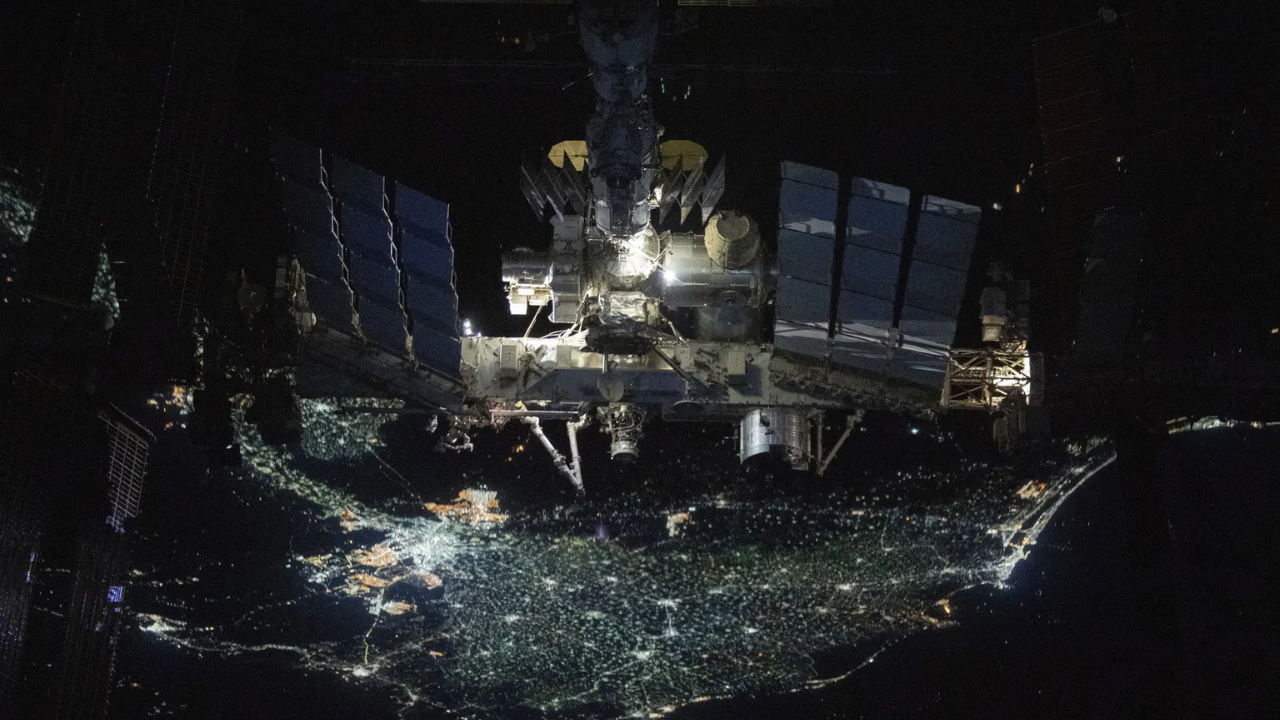[ad_1]
Nasa’s Glenn Research Centre in Cleveland has successfully streamed 4K video footage from an aircraft to the International Space Station (ISS) and back using laser communications for the first time. This achievement is part of a series of experiments on new technology that could enable live video coverage of astronauts during the Artemis missions to the Moon, Nasa said.
Traditionally, Nasa has used radio waves for space communications. However, laser communications utilise infrared light, allowing for data transmission that is 10 to 100 times faster than radio frequency systems.
In collaboration with the Air Force Research Laboratory and Nasa’s Small Business Innovation Research program, Glenn engineers installed a portable laser terminal on a Pilatus PC-12 aircraft. They conducted flights over Lake Erie, transmitting data from the aircraft to a ground station in Cleveland. The data was then sent via an Earth-based network to Nasa’s White Sands Test Facility in New Mexico, where infrared light signals were used to transmit the data.
The signals travelled an impressive 22,000 miles to reach Nasa’s Laser Communications Relay Demonstration (LCRD), which then relayed them to the ILLUMA-T on the ISS, and finally back to Earth. The High-Rate Delay Tolerant Networking (HDTN) system, developed at NASA’s Glenn Research Centre, played a crucial role in enabling the signal to penetrate cloud coverage effectively.
“These experiments are a tremendous accomplishment,” said Dr Daniel Raible, principal investigator for the HDTN project at Glenn. “We can now build upon the success of streaming 4K HD videos to and from the space station to provide future capabilities, like HD videoconferencing, for our Artemis astronauts, which will be important for crew health and activity coordination,” Glenn added.
The team continuously refined their technology’s performance through a series of flight tests, recognising that testing space technology in aeronautics is often more effective at identifying issues than ground testing and more cost-effective than space testing. Demonstrating success in a simulated space environment is essential for transitioning new technology from the laboratory to production.
These flights were part of a Nasa initiative aimed at streaming high-bandwidth video and other data from deep space to support future human missions beyond low Earth orbit. As Nasa develops advanced science instruments to capture high-definition data on the Moon and beyond, the agency’s Space Communications and Navigation (SCaN) program is embracing laser communications as a means to send large amounts of information back to Earth.
Although the ILLUMA-T payload is no longer installed on the ISS, researchers will continue testing 4K video streaming capabilities from the PC-12 aircraft through the end of July. The ultimate goal is to develop the technologies necessary to stream humanity’s return to the lunar surface through the Artemis missions.
Traditionally, Nasa has used radio waves for space communications. However, laser communications utilise infrared light, allowing for data transmission that is 10 to 100 times faster than radio frequency systems.
In collaboration with the Air Force Research Laboratory and Nasa’s Small Business Innovation Research program, Glenn engineers installed a portable laser terminal on a Pilatus PC-12 aircraft. They conducted flights over Lake Erie, transmitting data from the aircraft to a ground station in Cleveland. The data was then sent via an Earth-based network to Nasa’s White Sands Test Facility in New Mexico, where infrared light signals were used to transmit the data.
The signals travelled an impressive 22,000 miles to reach Nasa’s Laser Communications Relay Demonstration (LCRD), which then relayed them to the ILLUMA-T on the ISS, and finally back to Earth. The High-Rate Delay Tolerant Networking (HDTN) system, developed at NASA’s Glenn Research Centre, played a crucial role in enabling the signal to penetrate cloud coverage effectively.
“These experiments are a tremendous accomplishment,” said Dr Daniel Raible, principal investigator for the HDTN project at Glenn. “We can now build upon the success of streaming 4K HD videos to and from the space station to provide future capabilities, like HD videoconferencing, for our Artemis astronauts, which will be important for crew health and activity coordination,” Glenn added.
The team continuously refined their technology’s performance through a series of flight tests, recognising that testing space technology in aeronautics is often more effective at identifying issues than ground testing and more cost-effective than space testing. Demonstrating success in a simulated space environment is essential for transitioning new technology from the laboratory to production.
These flights were part of a Nasa initiative aimed at streaming high-bandwidth video and other data from deep space to support future human missions beyond low Earth orbit. As Nasa develops advanced science instruments to capture high-definition data on the Moon and beyond, the agency’s Space Communications and Navigation (SCaN) program is embracing laser communications as a means to send large amounts of information back to Earth.
Although the ILLUMA-T payload is no longer installed on the ISS, researchers will continue testing 4K video streaming capabilities from the PC-12 aircraft through the end of July. The ultimate goal is to develop the technologies necessary to stream humanity’s return to the lunar surface through the Artemis missions.
[ad_2]
Source link










